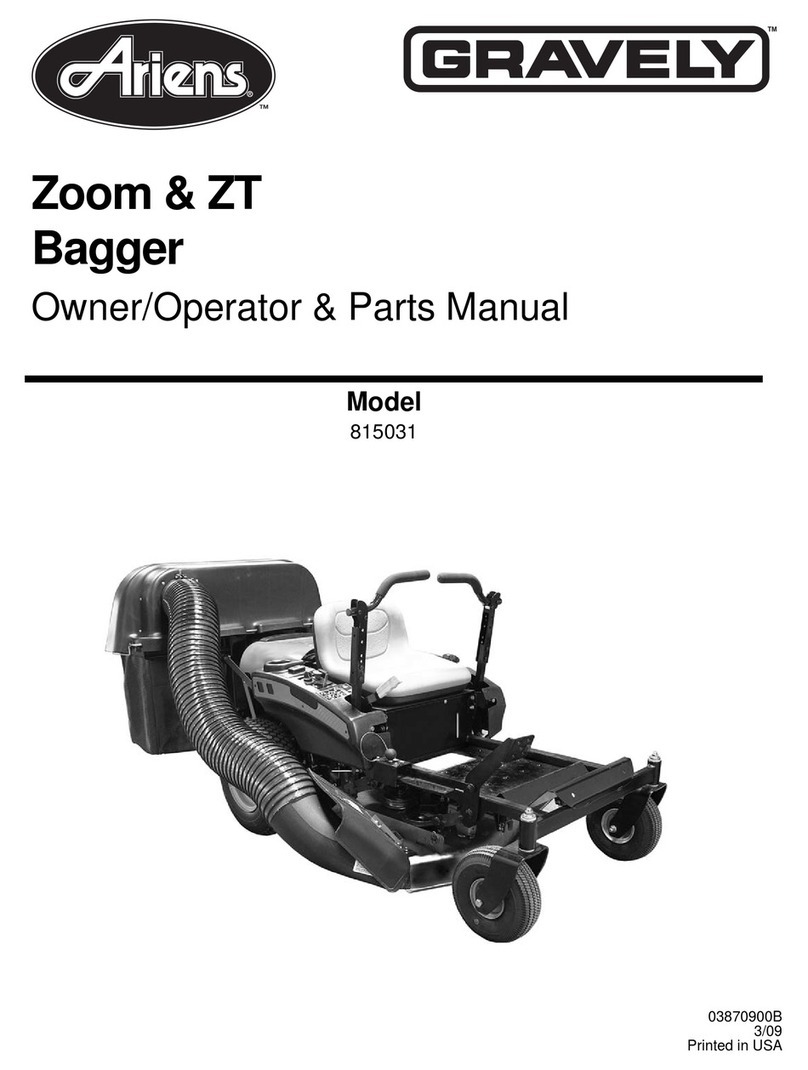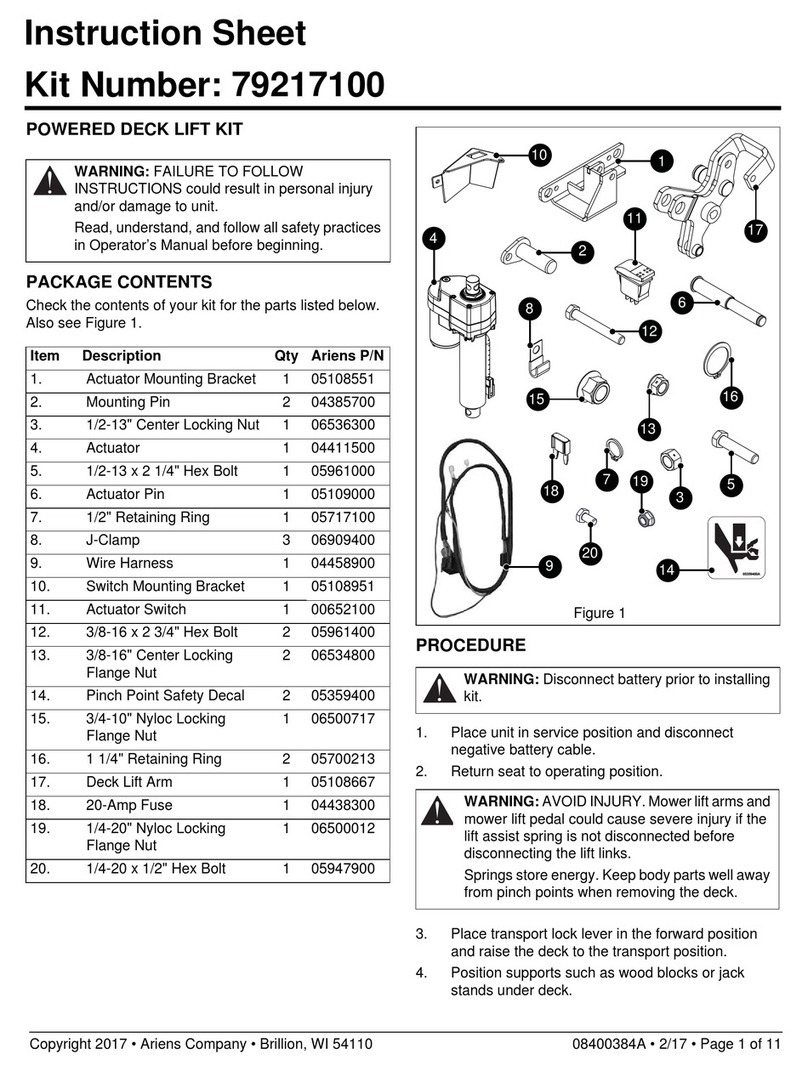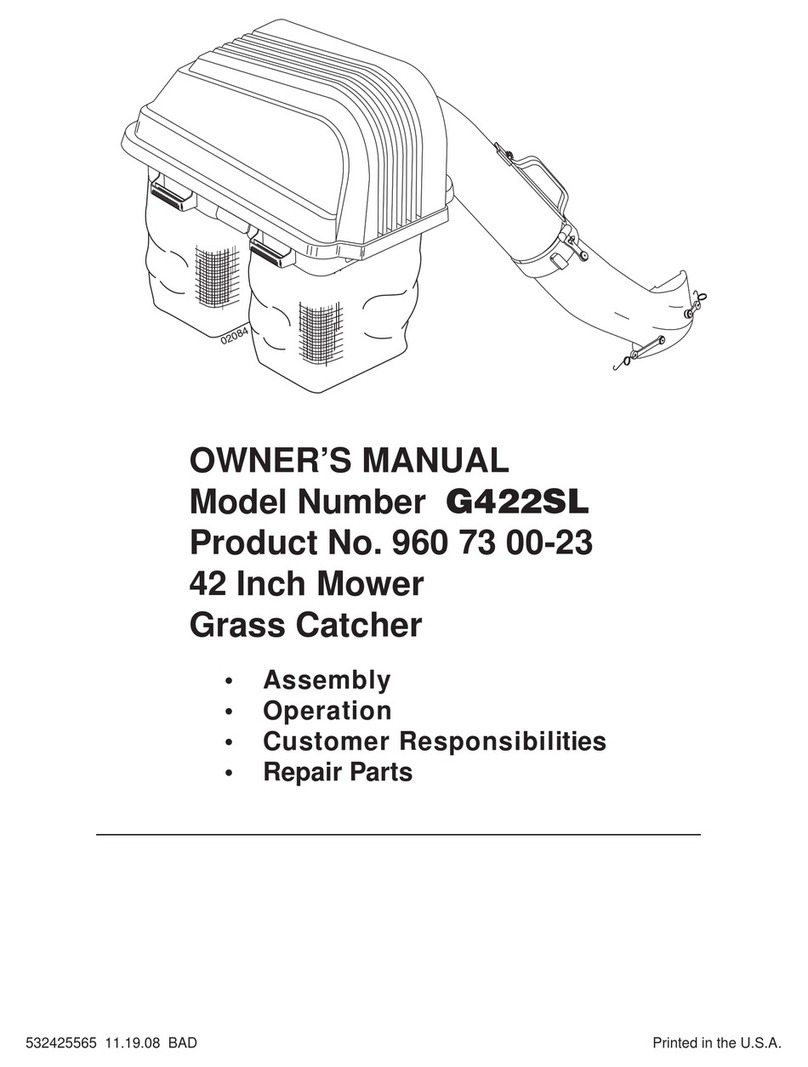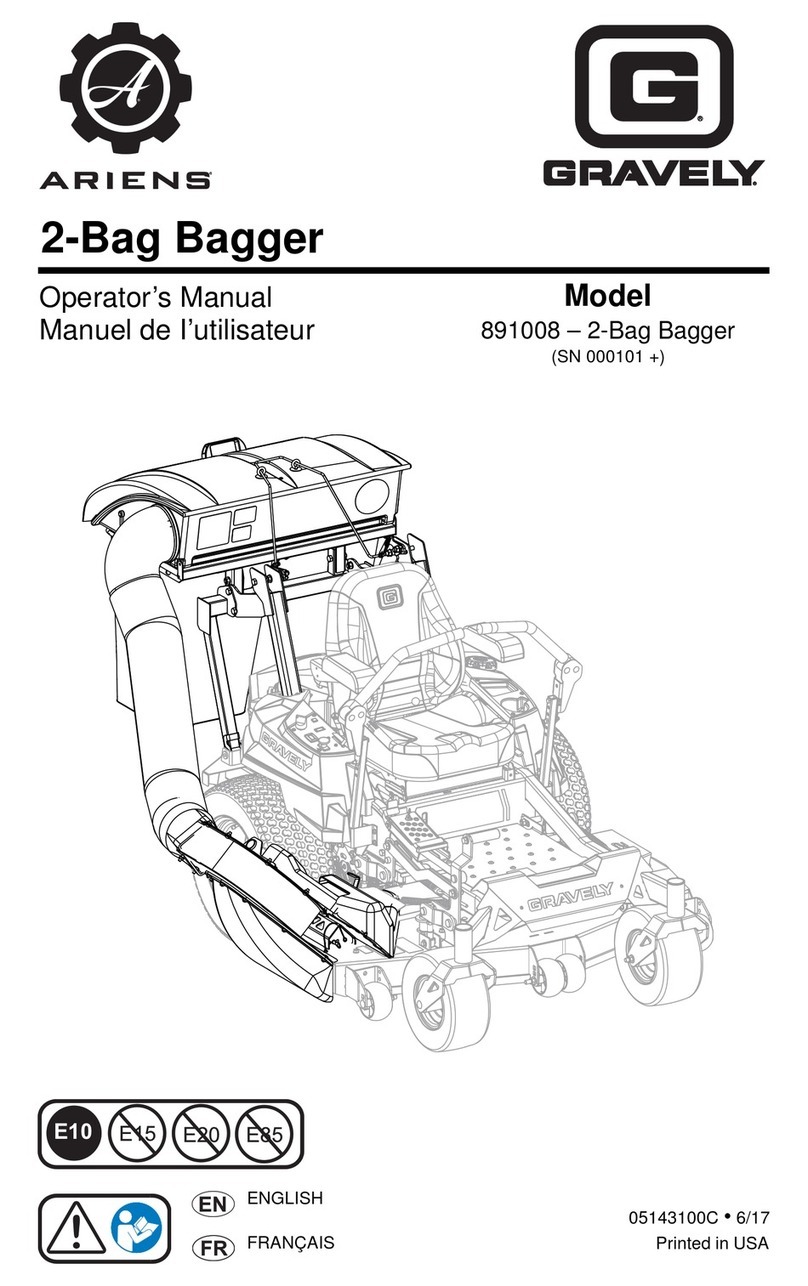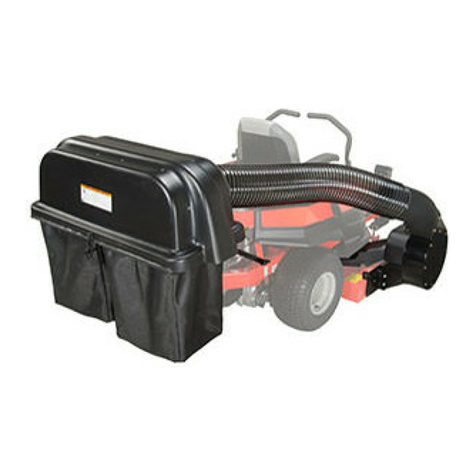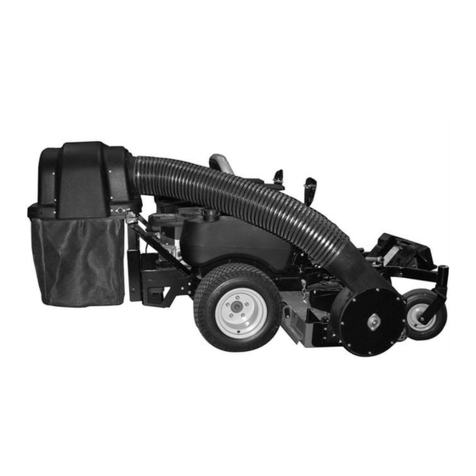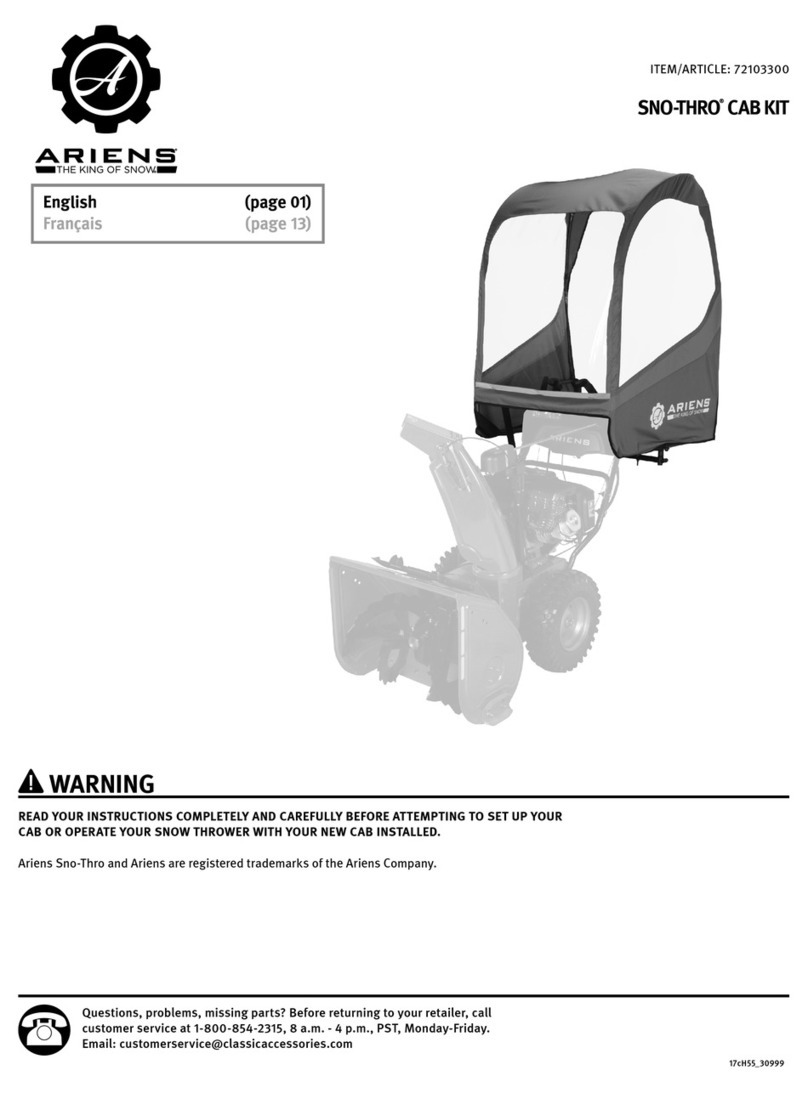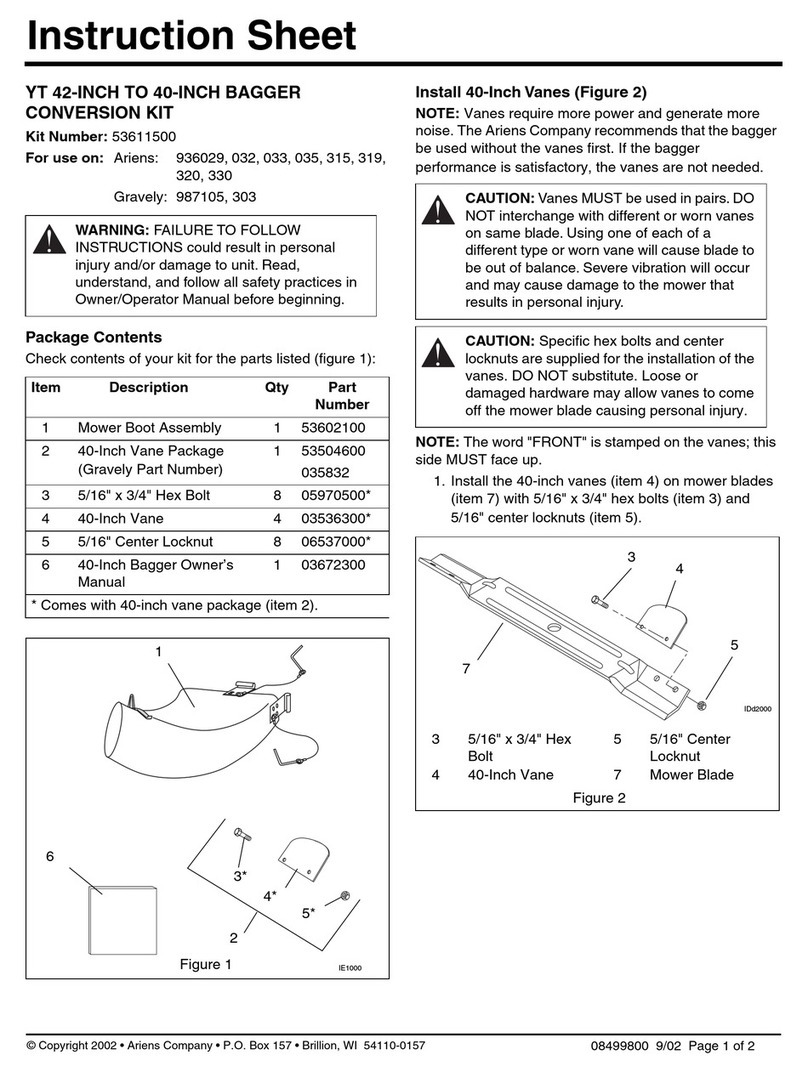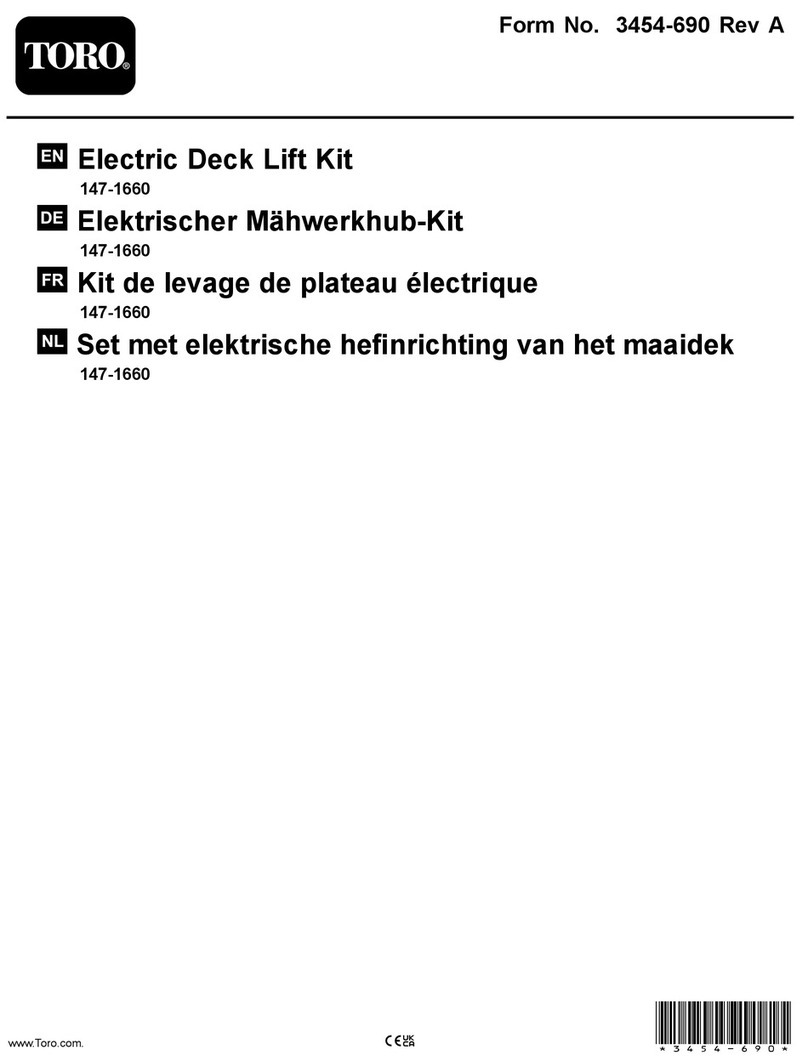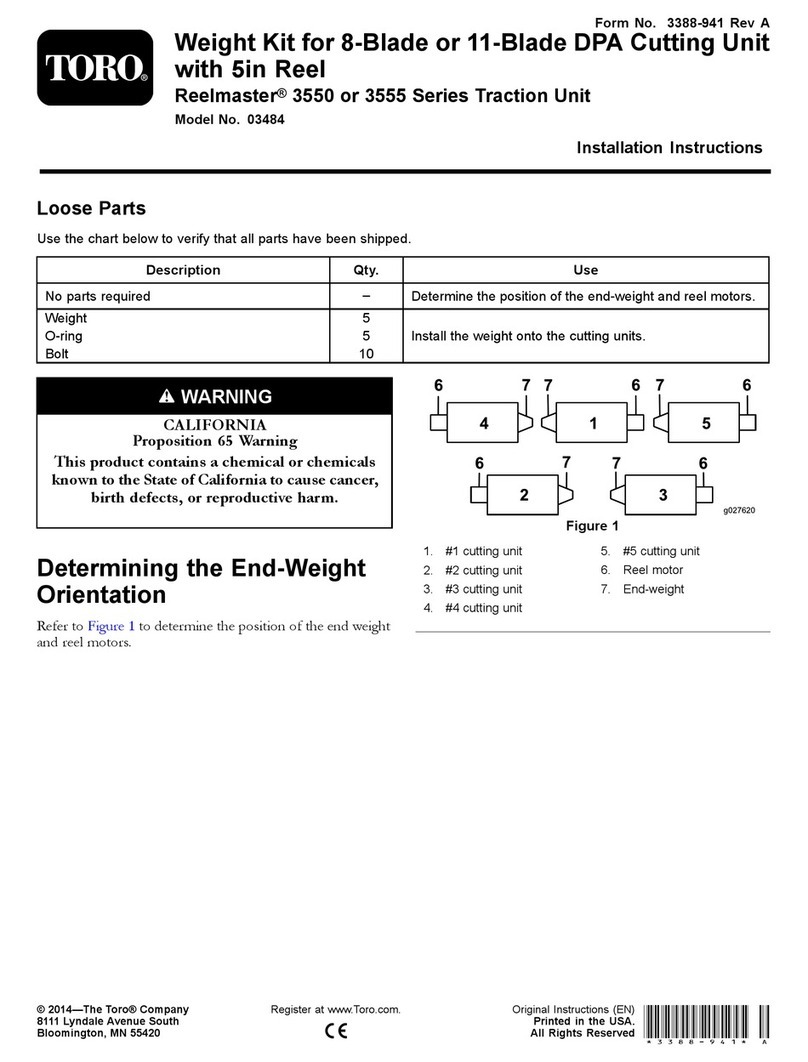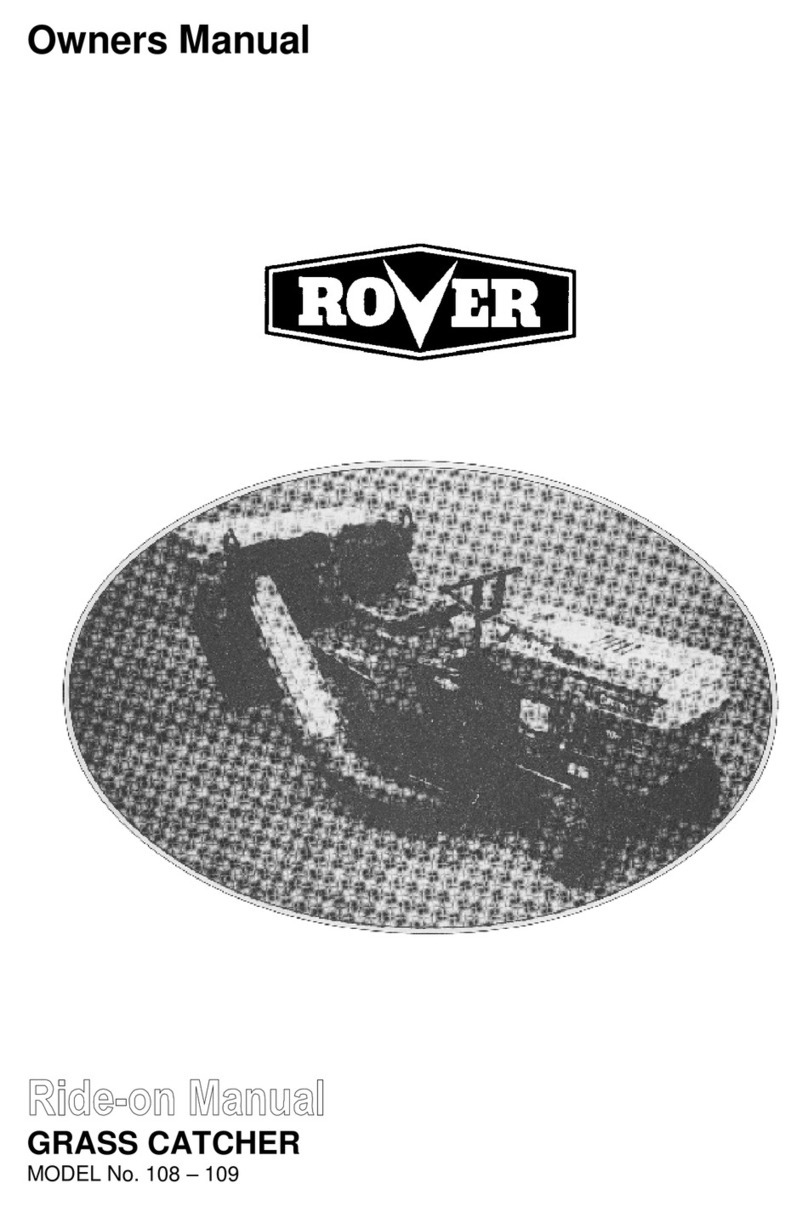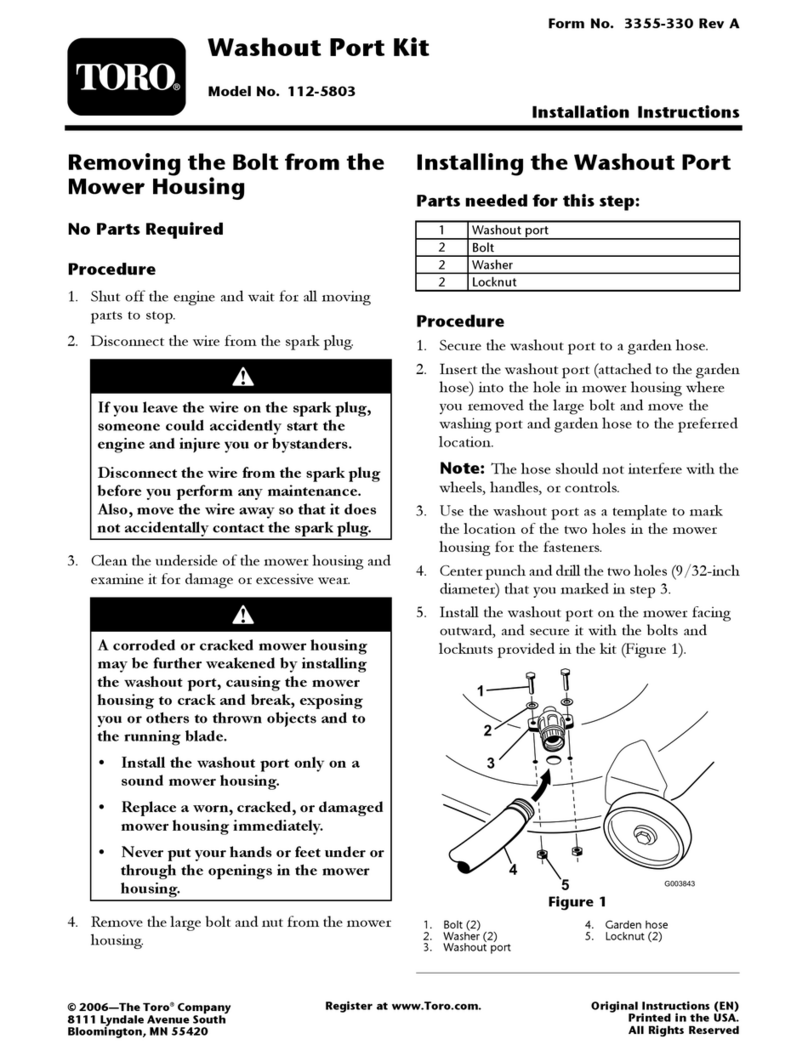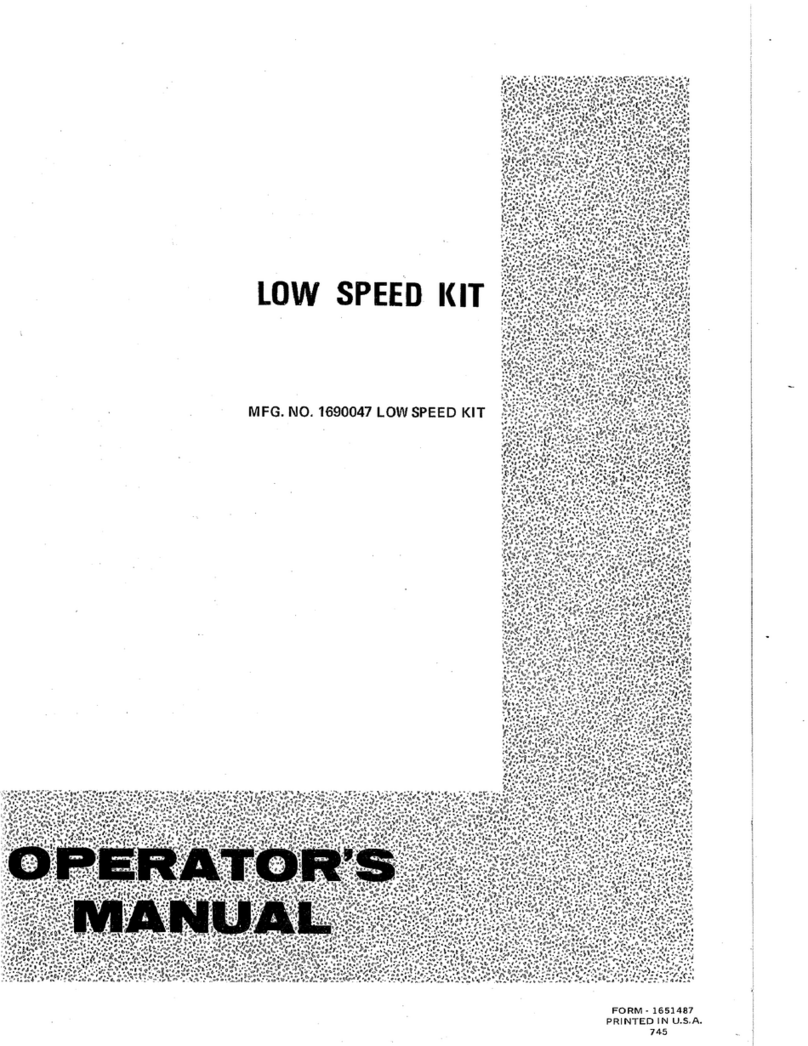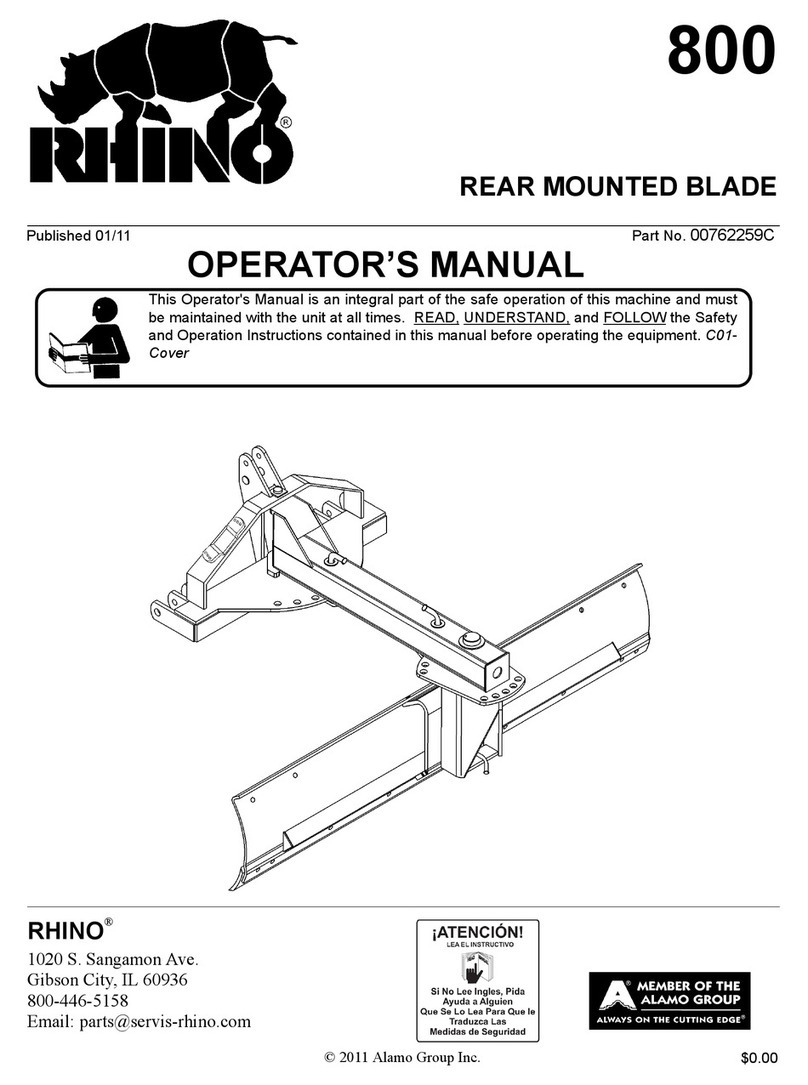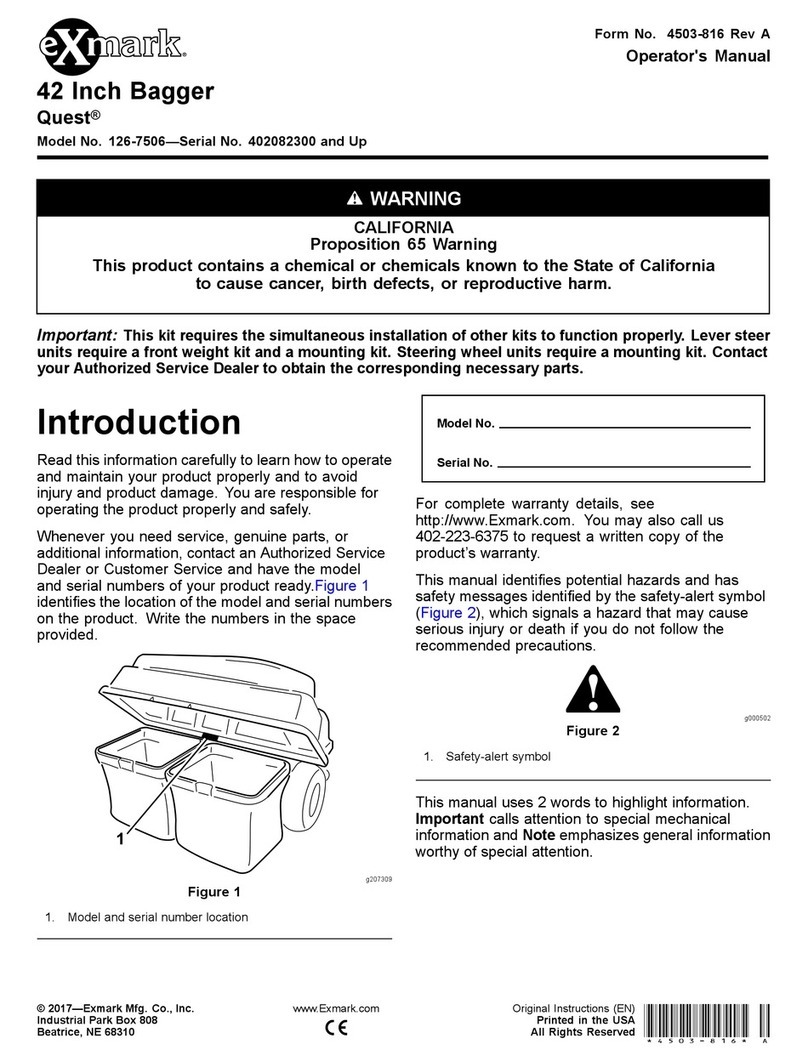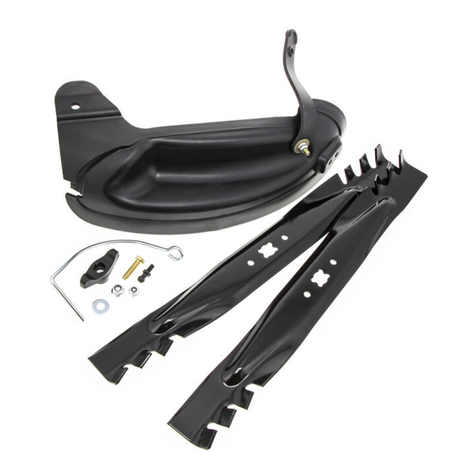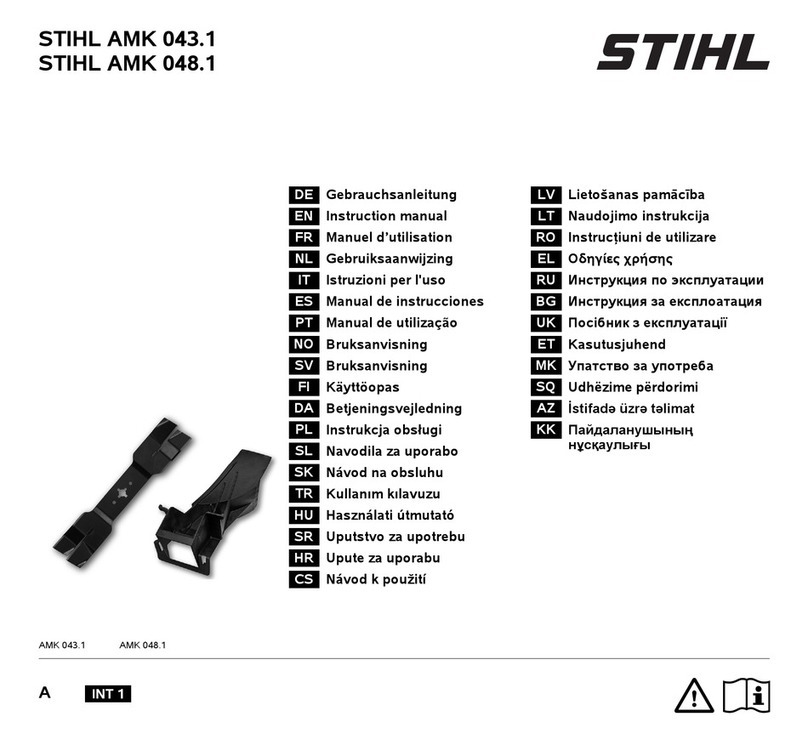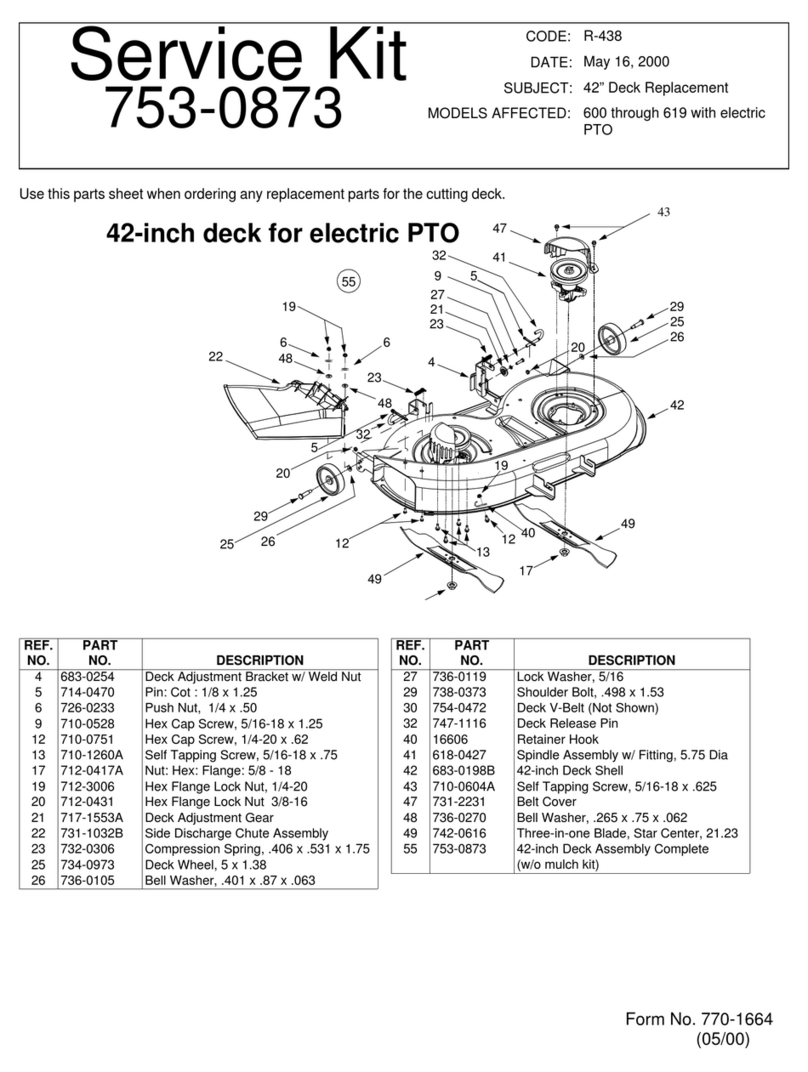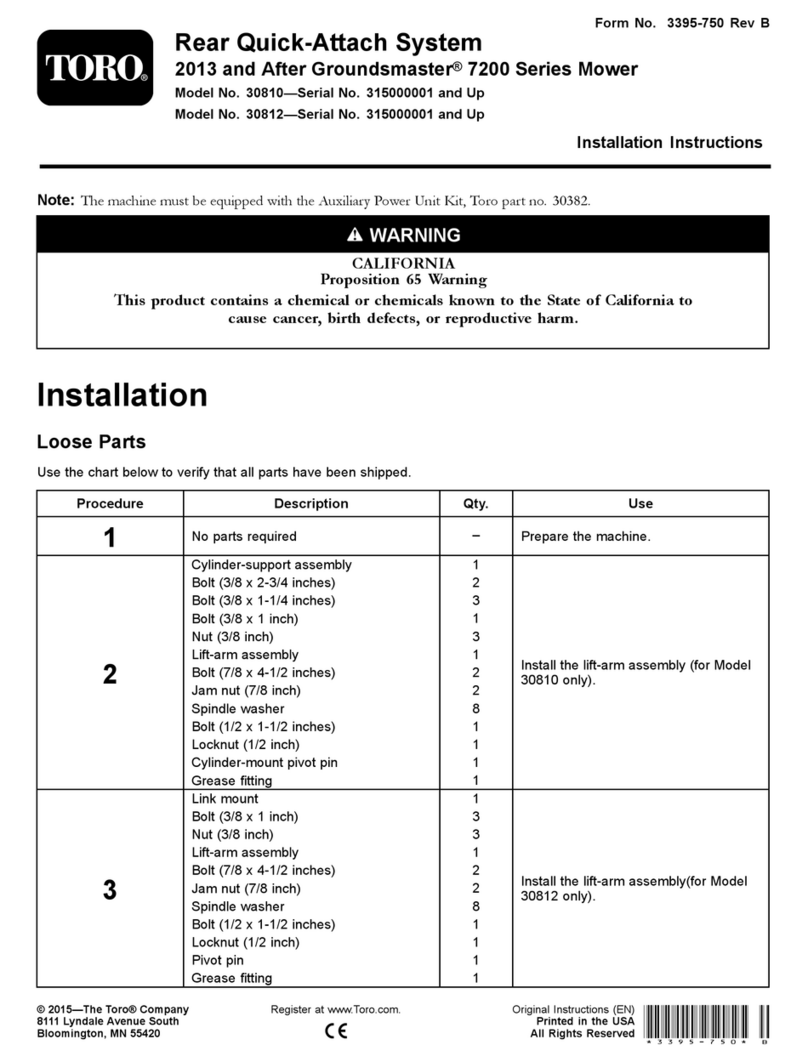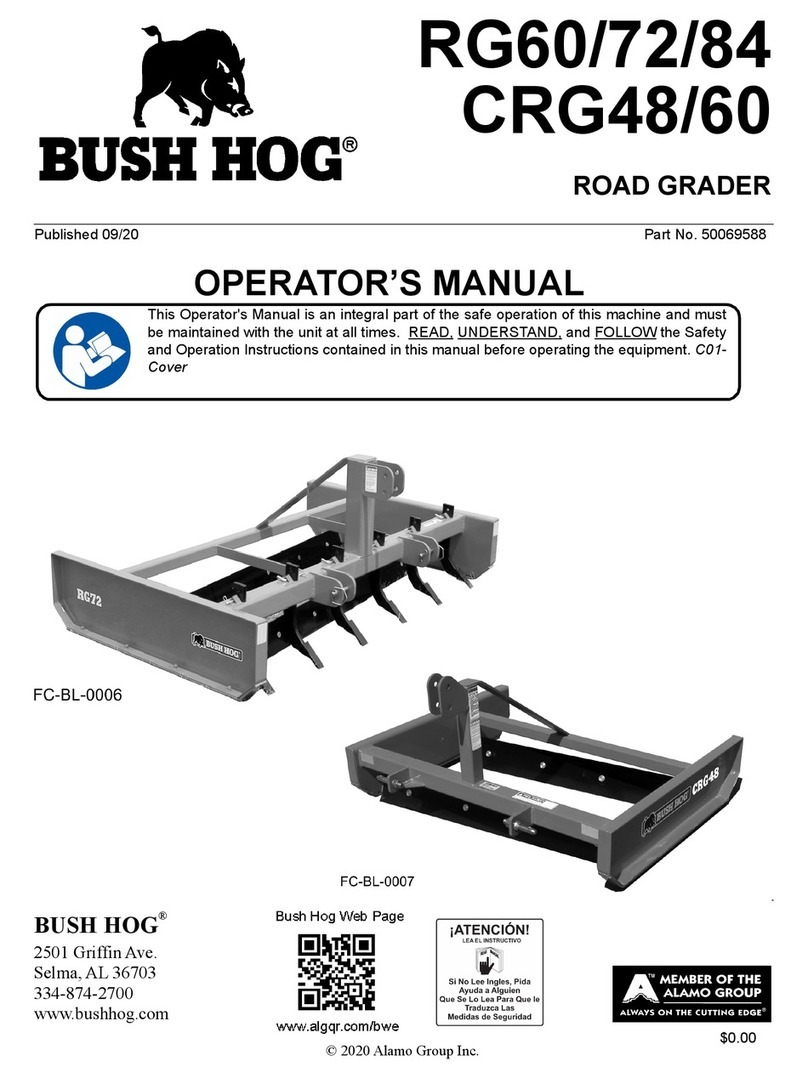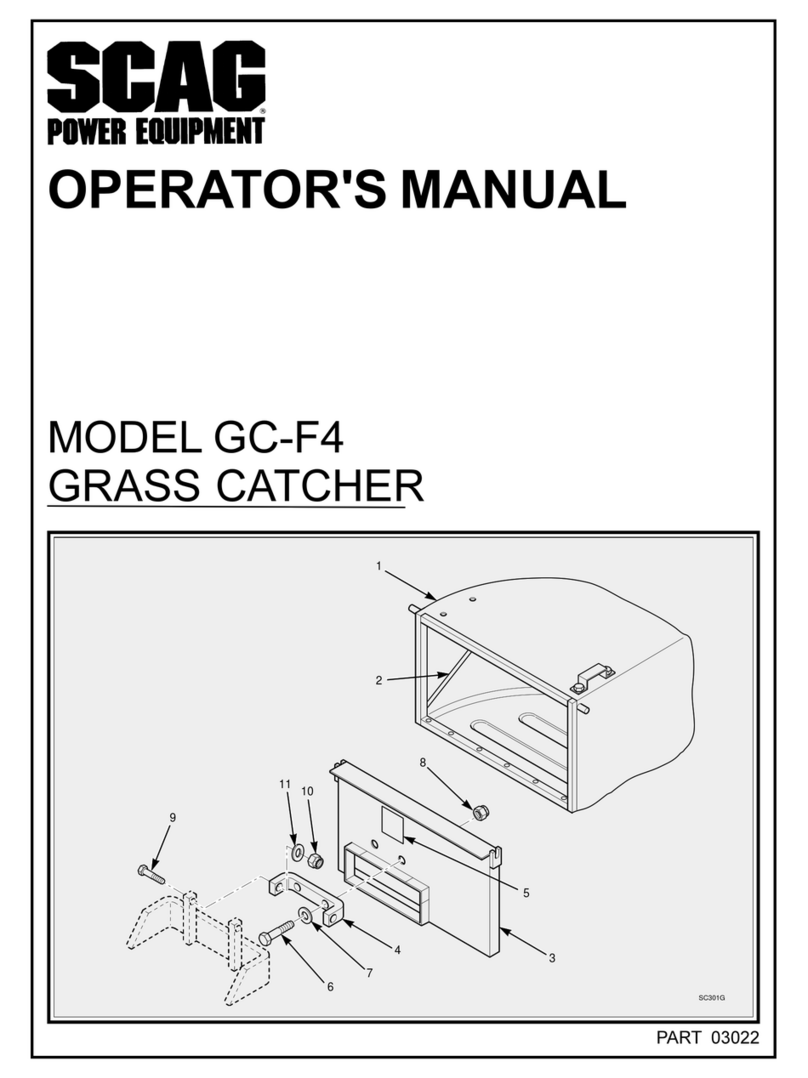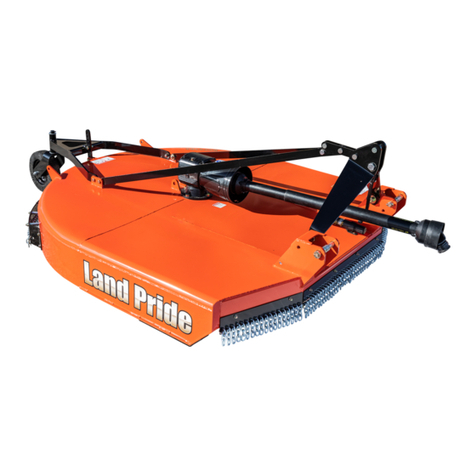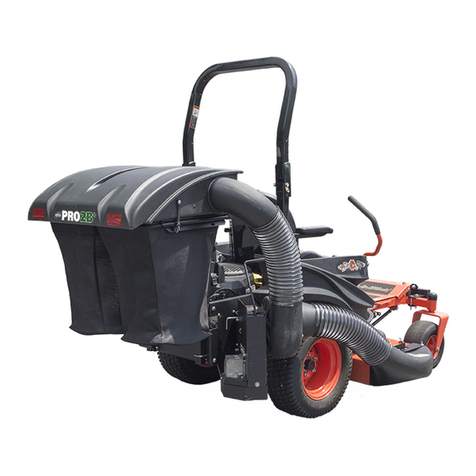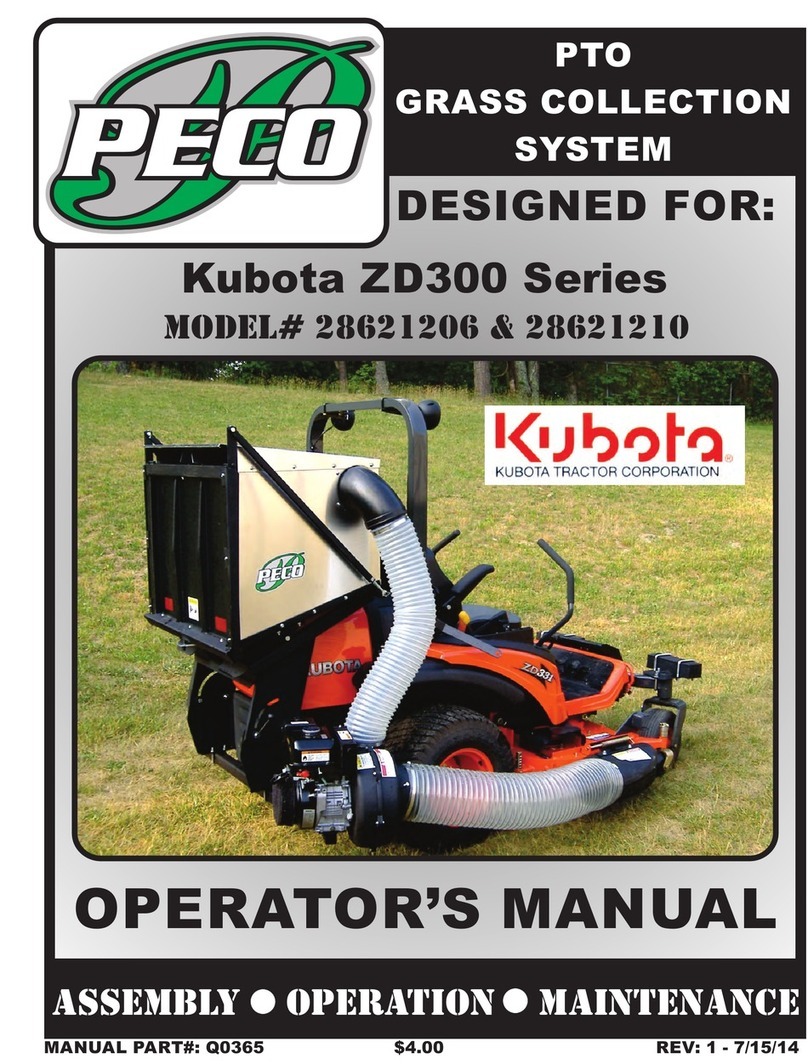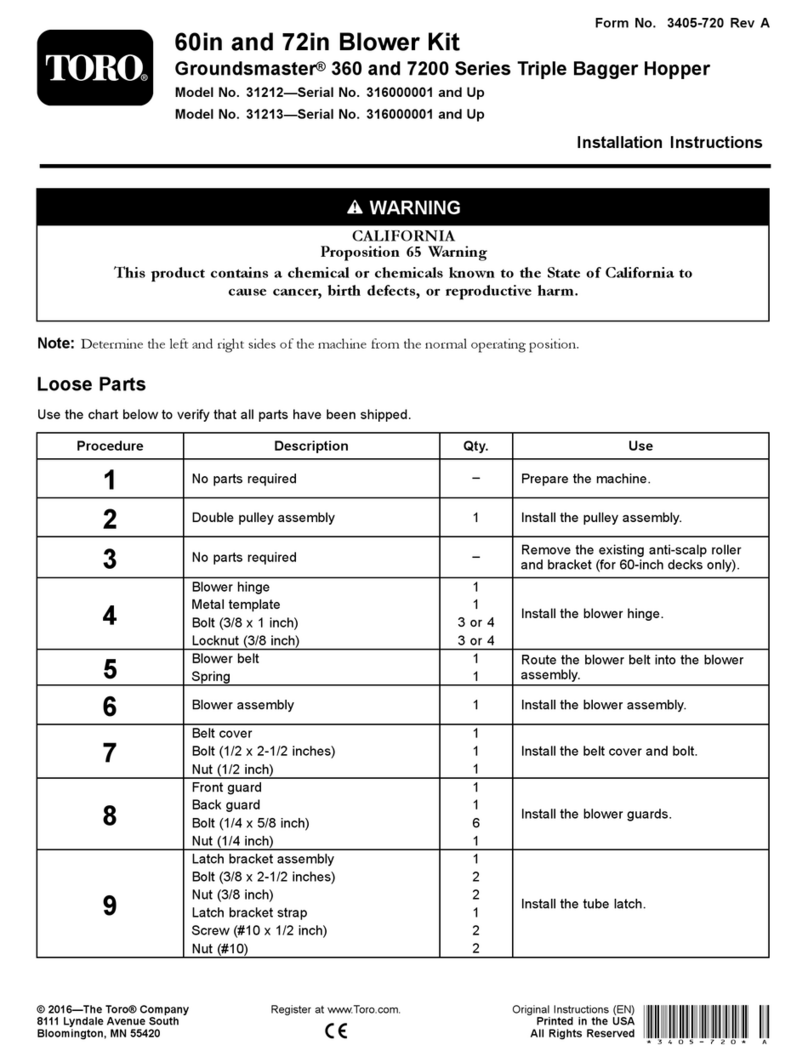
4
SAFETY RULES
Operation
Before operation understand:
• the function of all controls and how to operate
them.
• how to stop in an emergency.
• unit braking and steering characteristics.
Always be aware of maximum sweep of bagger when
turning. Always allow adequate clearance between
bagger, personnel and other objects when turning.
As grass catcher fills, be alert to changing unit stability
and control. Front counter weight provided must be
installed whenever grass catcher is in use.
Clear the area of objects such as rocks, toys, wire, etc.,
which could be picked up and thrown by the blades.
Watch for holes, ruts, or bumps. Uneven terrain could
overturn the machine. Tall grass can hide obstacles.
Before starting engine:
1. Disengage the PTO.
2. Place control levers into neutral lock position.
3. Engage parking brake.
Be sure the area is clear of people before mowing.
Stop machine if anyone enters the area.
Never carry passengers even if mower (PTO) is
disengaged.
Do not mow in reverse unless absolutely necessary.
Always look down and behind before and while
backing.
Deflected materials can cause injury and property
damage. Always shut off engine before opening hinged
cover or removing any portion of the bagger system.
Do not operate at to fast a rate. Do not change engine
governor setting or overspeed the engine.
Slow down before turning.
Never leave the machine running unattended. Always
turn off mower (PTO), shut off engine, remove key, and
wait for moving parts to stop before leaving operator’s
position.
Turn off mower (PTO) when not mowing, crossing
driveways, etc.
Stop engine, remove key and wait for all moving parts
to stop before removing grass catcher or unclogging
chute.
Mow only in daylight or good artificial light.
Watch for traffic when operating near or crossing
roadways.
Use extra care when loading or unloading the machine
into a trailer or truck. Secure unit chassis to transport
vehicle. Never secure from linkage which could
become damaged.
Do not operate mower unless bagger is attached or
guards are in operating position and in proper working
condition.
Do not turn on slopes unless necessary, and then turn
slowly and gradually downhill, if possible.
Mow up and down slopes, not across them.
Use slow speed. When necessary, move Travel-
Steering Control Levers slowly and smoothly while on
slope.
Keep all movements on the slope
slow
and
gradual
. Do
not make sudden changes in the speed or direction.
Avoid starting or stopping on the slope. If tires lose
traction, disengage the blades and proceed slowly
straight
down the slope.
Do not mow on wet grass. Reduced traction could
cause sliding.
Do not try to stabilize the machine by putting your foot
on the ground.
Do not use grass catcher on steep slopes.
Do not operate on slopes over 10˚.
Do not park on slopes unless necessary. When parking
on slope always chock or block wheels. Always set
parking brake.
Do not mow near dropoffs, ditches, or embankments.
The mower could suddenly turn over if a wheel is over
the edge of a cliff or ditch, or if an edge caves in.
Personal
Only trained adults may operate unit.
Training includes actual operation.
Clearly understand instructions.
Be alert! Conditions can change.
Wear adequate safety gear, protective gloves and
footwear. Never wear canvas shoes during operation.
Do not wear loose clothing or jewelry and tie back hair
which may be caught in rotating parts.
Always wear safety glasses or face shield while
operating your tractor or performing any adjustments or
repairs.
Do not operate the machine while under the influence
of alcohol or drugs. Safe operation requires your
complete unimpaired attention at all times.
Do not touch parts which are hot from operation.
ALWAYS allow parts to cool before attempting to
maintain, adjust or service unit.
Keep children out of the mowing area and under the
watchful care of another responsible adult.
Be alert and turn off machine if children enter the area.
Before and when backing up, look behind and down for
small children.
